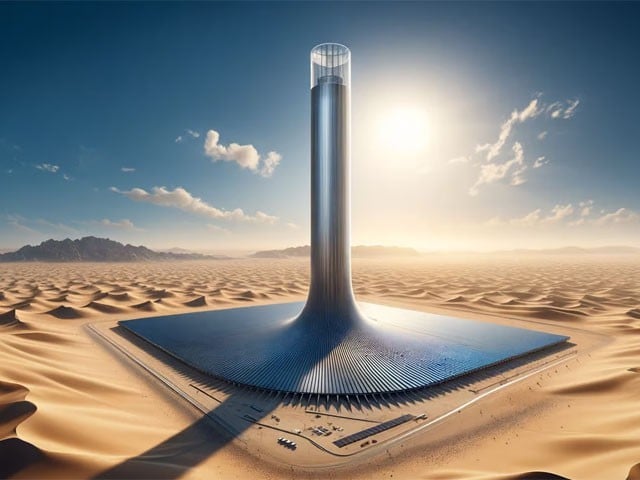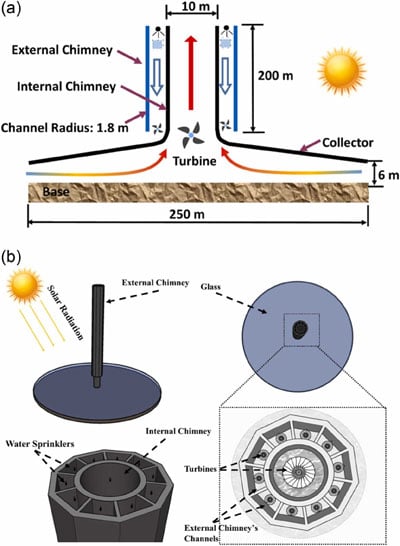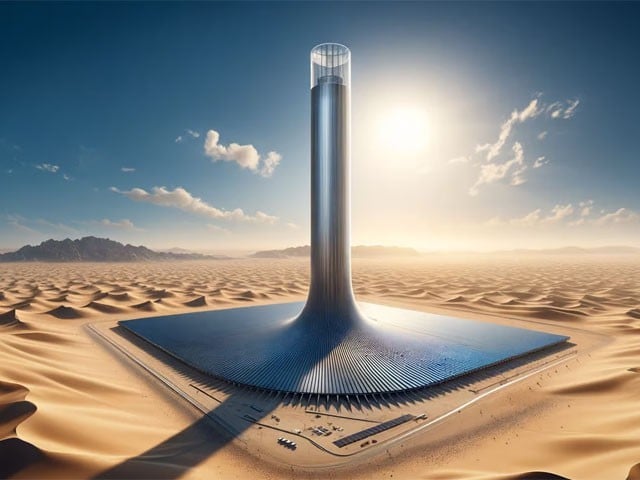
An image generated by artificial intelligence


Oman/Doha: Scientists have devised a method that can double the amount of energy from a solar power station.
A study published in the journal Energy Reports proposes a system called a solar tower power plant, which consists of a chimney-like tower with a mechanical turbine mounted at its base.
The system consists of two parts, one is the solar updraft system and the other is the cooling downdraft structure.
The air inside the tower, when heated after absorbing solar radiation, creates an updraft, i.e. the air moves upwards and turns the turbine, which in turn generates electricity.
However, this early model, created by Spanish engineers in the 1980s, was not adopted because it was too expensive for its size.
Conventional power plants of this design also have limited energy production as they depend on solar radiation and operate only during the day.
Now scientists from Qatar and Jordan have achieved better results by combining downdraft technology with improved updrafts.
In a downdraft system (cool air coming down), a pump at the top of the tower where warm air collects, carries water and cools the air.
The cold air, being heavier than the outside air, descends through the cylinder in the tower and reaches the turbine installed at the base to generate electricity.
According to researchers, by combining these two draft (updraft and downdraft) systems in this new Twin Technology Solar System (TTSS), energy can be generated at night from air heated by sunlight during the day.
The model of the system showed that the system can generate 752,763 kilowatt hours of electricity annually, or about 753 homes for five weeks.
(function(d, s, id){
var js, fjs = d.getElementsByTagName(s)[0];
if (d.getElementById(id)) {return;}
js = d.createElement(s); js.id = id;
js.src = “//connect.facebook.net/en_US/sdk.js#xfbml=1&version=v2.3&appId=770767426360150”;
fjs.parentNode.insertBefore(js, fjs);
}(document, ‘script’, ‘facebook-jssdk’));
(function(d, s, id) {
var js, fjs = d.getElementsByTagName(s)[0];
if (d.getElementById(id)) return;
js = d.createElement(s); js.id = id;
js.src = “//connect.facebook.net/en_GB/sdk.js#xfbml=1&version=v2.7”;
fjs.parentNode.insertBefore(js, fjs);
}(document, ‘script’, ‘facebook-jssdk’));



